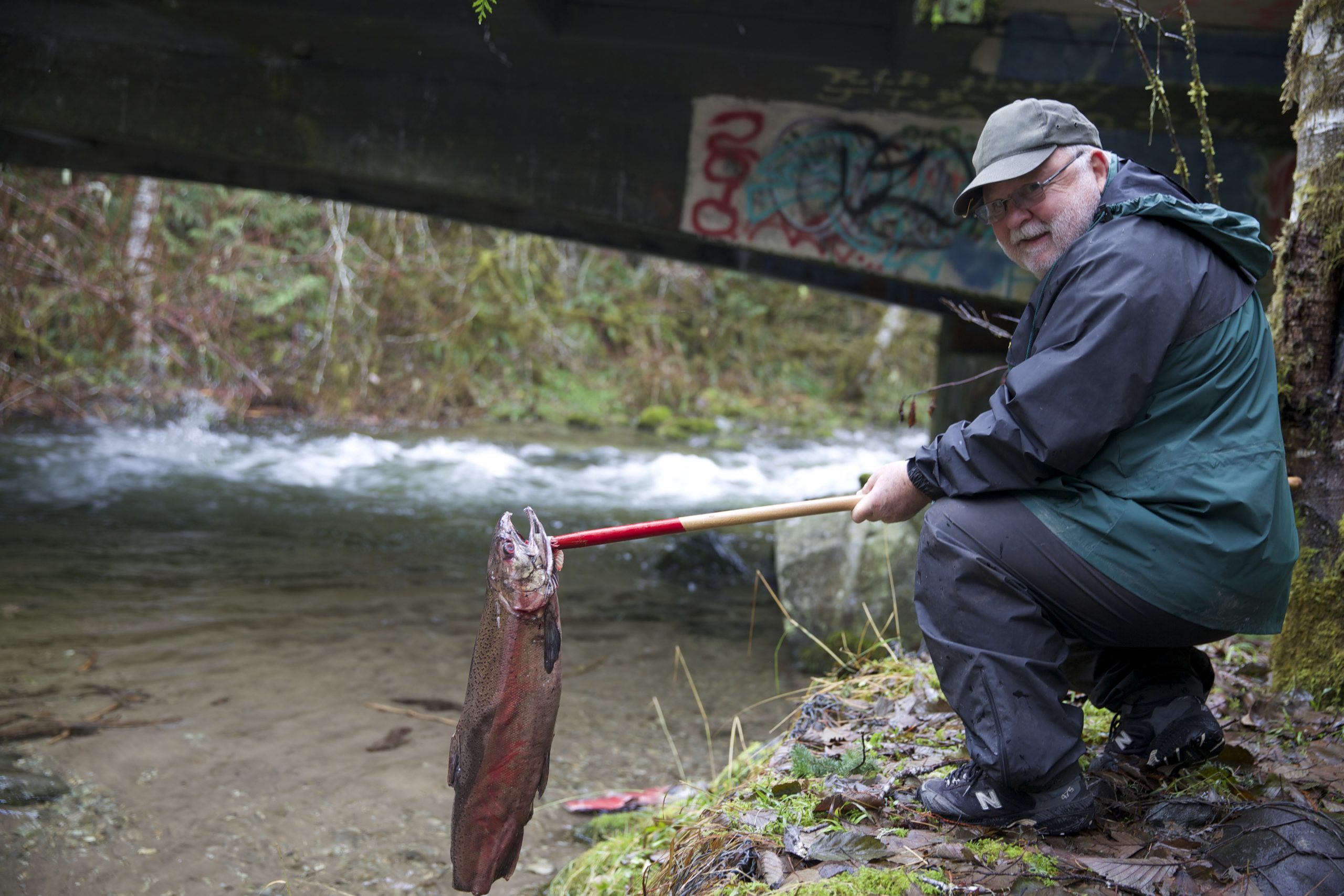
By Betsy Emery, Advocacy and Campaign Manager
May 17, 2021
T he Oregon Department of Fish and Wildlife (ODFW) produces 57 million hatchery fish each year. Have you ever wondered what happens to the excess fish that return to the hatchery after they’ve collected enough broodstock to perpetuate the fish run? Currently, those surplus fish are prioritized for three purposes: enriching nutrient concentrations on the spawning grounds, sustaining tribal ceremonial purposes, and supporting egg and carcass businesses. However, the Oregon legislature is currently considering a bill (HB 3191A) that would re-prioritize what ODFW does with returning hatchery fish.
Before wild salmon runs were teetering on the brink of extinction, spawning grounds were inundated with decaying salmon carcasses, providing vital food and nutrients for more than 137 species of fish and wildlife, including bears and eagles. Now, many spawning grounds see only 1% of the wild, adult fish returns they used to, causing problems for the species that rely on salmon as an important influx of new nutrients and food.
For the past twenty years, ODFW has tried to address this critical gap by returning an average of 51% of the carcasses of excess hatchery fish to spawning grounds within the same river basin. Last year, this accounted for nearly 57,000 hatchery fish. The fish carcass program, largely supported by Northwest Steelheaders volunteers, has placed hundreds of thousands of pounds of salmon in rivers throughout the Columbia River Basin over the past two decades.

A Northwest Steelheaders volunteer placing a hatchery fish carcass back into a stream.
Long-time Steelheader and Board Director, Norm Ritchie, reflected on Northwest Steelheaders’ involvement in expanding the fish carcass program’s capacity in the early 2000s. “Steelheaders volunteered to distribute carcasses in streams, especially members of the Sandy River Chapter.” Mr. Ritchie went on to say “We helped fund refrigeration trailers and other things to prevent fish collected from Cedar Creek Hatchery from rotting before we could distribute them in the Sandy River Basin.”
Currently, there isn’t a standard for how many carcasses ODFW is required to return to spawning grounds. HB 3191 would change that: requiring ODFW to place at least 50% of any returning hatchery fish, not just a percentage of the fish remaining after broodstock goals have been met. During public hearings this year, ODFW cited concerns about a redistribution requirement like that potentially impacting hatcheries ability to propagate enough fish in low return years.
Further, in high return years, the number of carcasses that ODFW can place is constrained by the Oregon Department of Environmental Quality, who considers carcasses an environmental pollutant. To preserve water quality, ODFW may only place a specific number of carcasses each river mile within the original river basin between August and May. Many advocates, including Northwest Steelheaders, continue to push the Department to minimize their use of chemical contaminants in hatchery operations to get away from this issue.
In very large return years when enough hatchery fish return to meet broodstock, Tribal ceremonial, and carcass redistribution goals, some are sold to businesses that produce and sell salmon eggs and bait through a competitive bid process. Last year, ODFW sold 14,500 high quality carcasses through this process, generating over $300,000 in funding to support deferred hatchery maintenance.
On May 19th, the Senate Natural Resources and Wildfire Recovery Committee will consider next steps about whether to change how returning hatchery fish are allocated among competing interests: broodstock, Tribes, habitat, and businesses. We are tracking this legislation very closely and will keep our members informed about what happens as the legislative session in Salem wraps up.
Questions? Contact our Advocacy and Campaign Manager, Betsy Emery at bemery@anws.org.